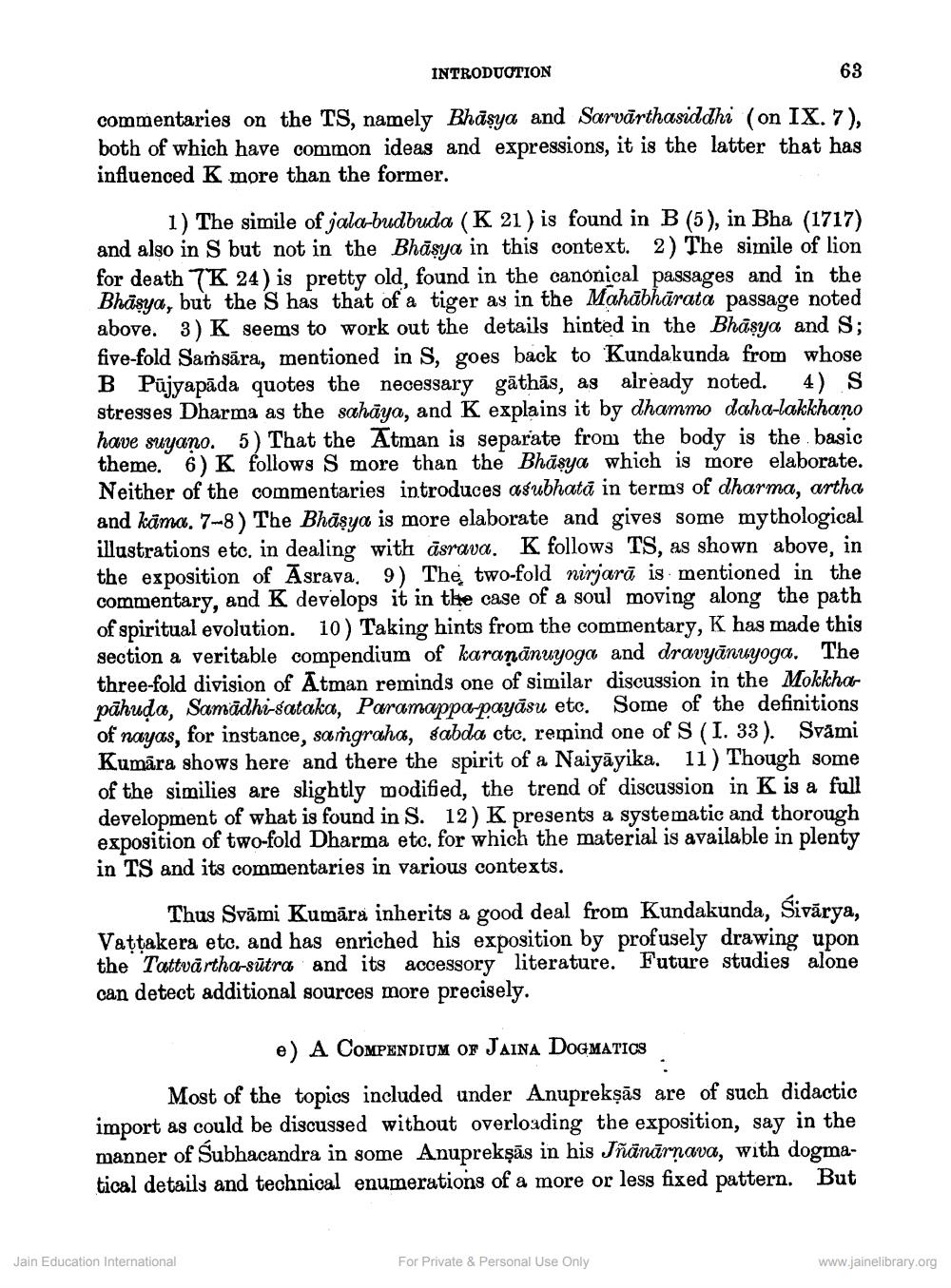________________
INTRODUOTION
commentaries on the TS, namely Bhasya and Sarvārthasiddhi (on IX. 7), both of which have common ideas and expressions, it is the latter that has influenced K more than the former.
1) The simile of jalabudbuda (K 21 ) is found in B (5), in Bha (1717) and also in S but not in the Bhāsya in this context. 2) The simile of lion for death 7K 24) is pretty old, found in the canonical passages and in the Bhāsya, but the S has that of a tiger as in the Mahābhārata passage noted above. 3) K seems to work out the details hinted in the Bhāsya and S; five-fold Samsāra, mentioned in S, goes back to Kundakunda from whose B Pujyapāda quotes the necessary gāthās, as already noted. 4) S stresses Dharma as the sahāya, and K explains it by dhammo daha-lakkhano have suyano. 5) That the Atman is separate from the body is the basic theme. 6) K follows S more than the Bhāsya which is more elaborate. Neither of the commentaries introduces asubhată in terms of dharma, artha and käma. 7-8) The Bhāşya is more elaborate and gives some mythological illustrations etc, in dealing with asrava. K follows TS, as shown above, in the exposition of Asraya, 9) The two-fold nirjarā is mentioned in the commentary, and K develops it in the case of a soul moving along the path of spiritual evolution. 10) Taking hints from the commentary, K has made this section a veritable compendium of karanānuyoga and dravyānuyoga. The three-fold division of Atman reminds one of similar discussion in the Mokkha pāhuda, Samadhi-sataka, Paramappa-payāsu etc. Some of the definitions of nayas, for instance, saṁgraho, sabda ctc, remind one of S (I. 33). Svāmi Kumāra shows here and there the spirit of a Naiyāyika. 11) Though some of the similies are slightly modified, the trend of discussion in K is a full development of what is found in S. 12) K presents a systematic and thorough exposition of two-fold Dharma etc. for which the material is available in plenty in TS and its commentaries in various contexts.
Thus Svāmi Kumāra inherits a good deal from Kundakunda, Sivărya, Vattakera etc. and has enriched his exposition by profusely drawing upon the Tattvārtha-sūtra and its accessory literature. Future studies alone can detect additional sources more precisely.
e) A COMPENDIUM OF Jaina DOGMATICS Most of the topics included under Anuprekşās are of such didactic import as could be discussed without overloading the exposition, say in the manner of Subhacandra in some Anuprekşās in his Jñänārņava, with dogmatical details and technical enumerations of a more or less fixed pattern. But
Jain Education International
For Private & Personal Use Only
www.jainelibrary.org




